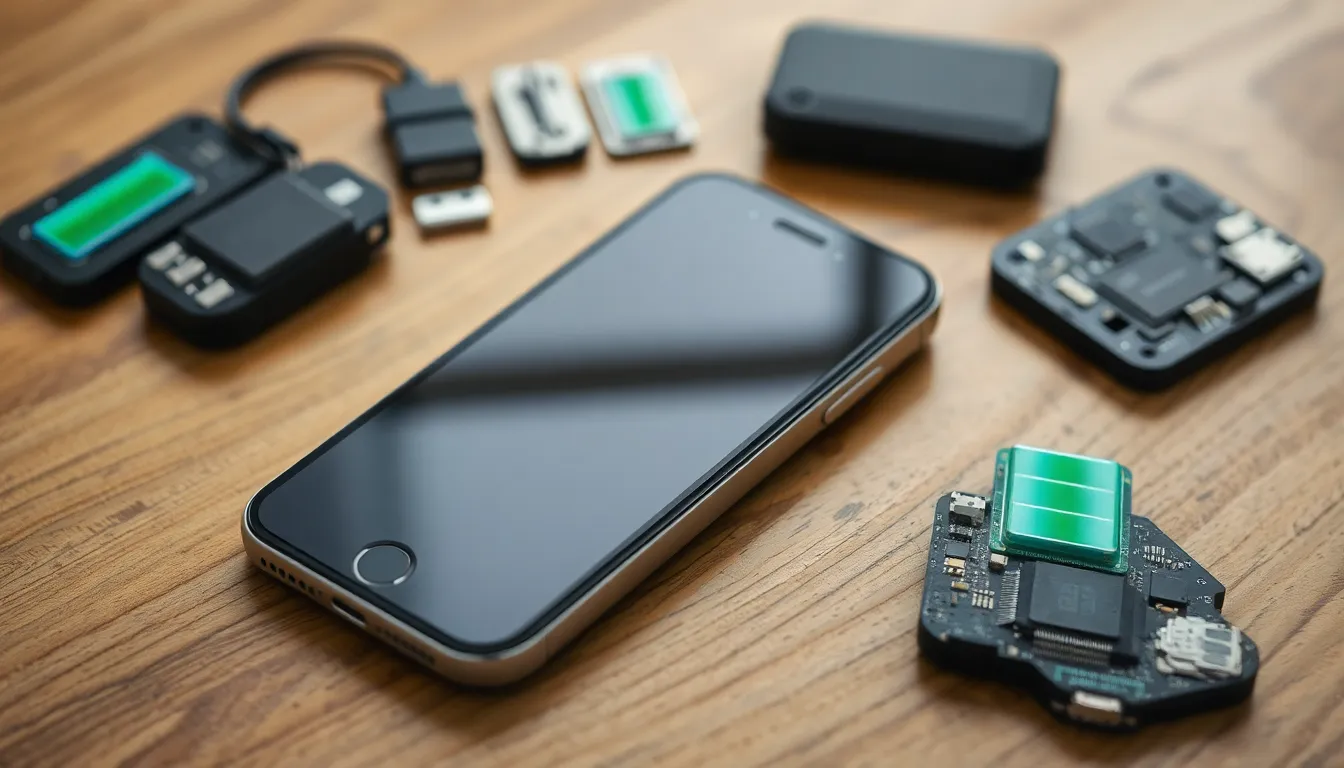Is your iPhone taking its sweet time to load apps, like it’s stuck in a time warp? You’re not alone. Many iPhone users find themselves tapping their screens in frustration, wondering if their device is secretly plotting against them. Slow loading times can feel like a cruel joke, especially when you’re trying to catch up on the latest memes or check important messages.
Table of Contents
ToggleCommon Reasons for Slow iPhone Performance
Several factors contribute to slow performance on iPhones. Users often encounter frustrating delays that can hinder productivity and enjoyment.
Background App Activity
Background app activity can consume system resources. Many apps continue running even when not in use. This situation leads to increased memory usage, which ultimately slows down performance. Closing unused apps regularly can improve speed. Monitoring active apps also helps in identifying any that consume excessive resources.
Insufficient Storage Space
Limited storage space causes noticeable slowdowns. When an iPhone’s storage approaches capacity, it struggles to allocate space for essential processes. Users should regularly check available storage and delete unnecessary files or apps. Recommendations suggest keeping at least 10% of the total storage free to maintain optimal performance.
Software Updates and Compatibility
Outdated software can significantly impact device performance. Running an older version of iOS may lead to compatibility issues with newer apps. Regularly updating the operating system ensures access to improvements and bug fixes. Users should enable automatic updates or regularly check for updates to stay current and enhance overall functionality.
Hardware Limitations

Hardware limitations often lead to slow loading times on iPhones. Several factors contribute to this slowdown, including aging devices and battery health issues.
Aging Devices
Aging devices can struggle with newer apps. Performance often declines as technology evolves. Older processors may not handle current app demands efficiently. Users may notice increased loading times when running resource-intensive applications. Memory capacity typically decreases as devices age. Insufficient RAM impacts multitasking capability, resulting in sluggish performance. Regular upgrades can mitigate these issues.
Battery Health Issues
Battery health significantly affects iPhone performance. Deteriorating batteries can cause the device to throttle performance. Users may experience unexpected shutdowns or slow app responses. Essentially, when batteries reach a certain capacity percentage, the phone activates power-saving modes. This may hinder performance, contributing to loading delays. Monitoring battery health in settings allows users to track changes. Replacing batteries when necessary helps restore performance levels.
Network Connectivity
Network connectivity plays a significant role in the loading speed of applications on iPhones. Both Wi-Fi and cellular data can impact performance considerably.
Wi-Fi Connection Problems
Weak or unstable Wi-Fi connections can cause slow loading times. Obstructions like walls can interfere with signals, leading to a poor connection. Users may experience slow speeds if multiple devices connect to the same network. Densely populated areas often see network congestion, especially during peak hours. It’s crucial to check the Wi-Fi signal strength in the area where the device is used. Additionally, forgetting and reconnecting to the network can resolve connectivity issues.
Cellular Data Issues
Cellular data also contributes to slow app loading. A weak signal can prevent smooth operation, particularly in rural areas or buildings with thick walls. Users may encounter slower speeds when approaching data caps set by their carriers. Switching to a different carrier or upgrading the plan may enhance data speeds. It’s important to understand that network settings and updates can resolve connectivity problems as well. Monitoring data usage and managing app permissions can improve overall performance.
Solutions to Improve Performance
Users can employ several strategies to enhance their iPhone’s performance. The following methods can address slow loading times effectively.
Restarting Your iPhone
Restarting the iPhone can refresh its system and resolve minor glitches that slow down performance. A simple power cycle clears the memory and stops unnecessary background processes. To restart, press and hold the side button along with the volume button until the slider appears. After dragging the slider to turn off the device, wait a few seconds before powering it back on. This action often leads to improved responsiveness and faster app loading times.
Clearing Cache and Data
Clearing cache and data can significantly boost performance. Over time, cached data accumulates, potentially hindering speed. Users can access settings to clear this data. Navigate to Settings, tap on Safari or the specific app, and select the option to clear history and website data. Regularly performing this task can help maintain optimal performance and keep apps running smoothly.
Updating iOS
Updating iOS plays a crucial role in maintaining performance. Each update includes performance improvements and bug fixes that enhance functionality. To check for updates, go to Settings, tap General, and select Software Update. Keeping the iPhone updated ensures compatibility with the latest apps and system features, which might alleviate loading delays and enhance overall user experience.
Experiencing slow loading times on an iPhone can be frustrating but it’s not an uncommon issue. By understanding the various factors that contribute to this problem users can take proactive steps to enhance their device’s performance. Regular maintenance such as closing unused apps keeping storage optimized and updating the operating system plays a vital role in ensuring a smooth experience.
Additionally monitoring battery health and network connectivity can significantly impact loading speeds. Implementing these strategies can lead to improved responsiveness and a better overall user experience. With a little attention and care users can keep their iPhones running efficiently and enjoy seamless access to their favorite apps.






